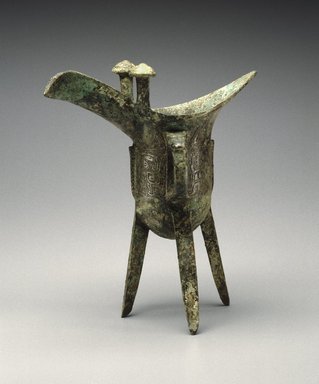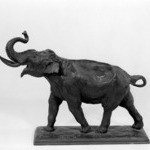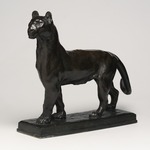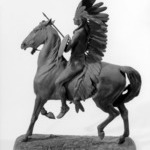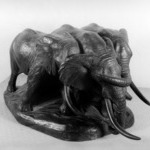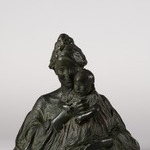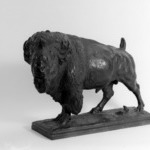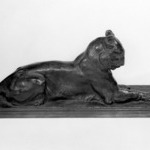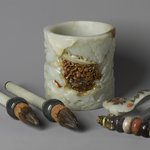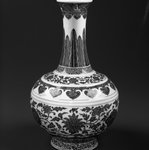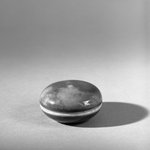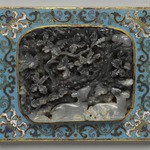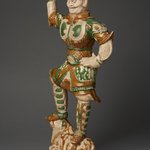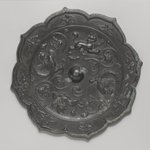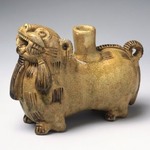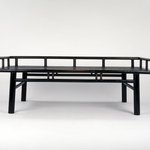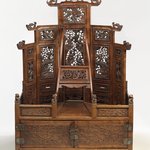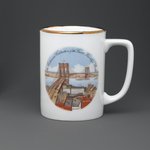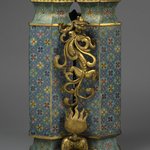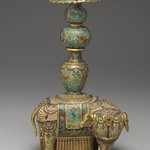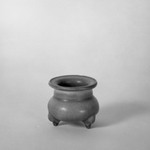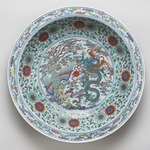
Ritual Wine Vessel (Jue)
Asian Art
On View: Asian Galleries, West, 2nd floor (China)
Ritual wine vessels of this shape (jue) are the earliest surviving form of bronzes in ancient China. They functioned as cups for drinking fermented-millet beverages in rituals to the ancestors. Such vessels from the early Erligang period are thinly cast. By the Anyang period, the bodies and legs become thicker and sturdier, as bronze casting developed. Chinese technological advances allowed the creation of elaborate ritual bronzes using piece-mold casts, which could be reused to make multiple copies. The marks from the ceramic mold for this jue can be seen down the center of each leg and along the corresponding parts of the body. The scroll lines and two protruding eyes embellishing the body show the early abstract form of the animal-mask (taotie) motif.
MEDIUM
Bronze
DATES
13th century B.C.E.
DYNASTY
Shang Dynasty
PERIOD
Anyang Period
DIMENSIONS
7 1/2 x 6 1/4 in. (19.1 x 15.9 cm) (show scale)
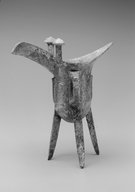


COLLECTIONS
Asian Art
ACCESSION NUMBER
68.185.14
CREDIT LINE
Gift of Mr. and Mrs. Paul E. Manheim
EXHIBITIONS
MUSEUM LOCATION
This item is on view in Asian Galleries, West, 2nd floor (China)
CAPTION
Ritual Wine Vessel (Jue), 13th century B.C.E. Bronze, 7 1/2 x 6 1/4 in. (19.1 x 15.9 cm). Brooklyn Museum, Gift of Mr. and Mrs. Paul E. Manheim, 68.185.14. Creative Commons-BY (Photo: Brooklyn Museum, 68.185.14_bw.jpg)
IMAGE
overall, 68.185.14_bw.jpg. Brooklyn Museum photograph
"CUR" at the beginning of an image file name means that the image was created by a curatorial staff member. These study images may be digital point-and-shoot photographs, when we don\'t yet have high-quality studio photography, or they may be scans of older negatives, slides, or photographic prints, providing historical documentation of the object.
RIGHTS STATEMENT
Creative Commons-BY
You may download and use Brooklyn Museum images of this three-dimensional work in accordance with a Creative Commons license. Fair use, as understood under the United States Copyright Act, may also apply.
Please include caption information from this page and credit the Brooklyn Museum. If you need a high resolution file, please fill out our online application form (charges apply).
For further information about copyright, we recommend resources at the United States Library of Congress, Cornell University, Copyright and Cultural Institutions: Guidelines for U.S. Libraries, Archives, and Museums, and Copyright Watch.
For more information about the Museum's rights project, including how rights types are assigned, please see our blog posts on copyright.
If you have any information regarding this work and rights to it, please contact copyright@brooklynmuseum.org.
RECORD COMPLETENESS
Not every record you will find here is complete. More information is available for some works than for others, and some entries have been updated more recently. Records are frequently reviewed and revised, and we welcome any additional information you might have.
